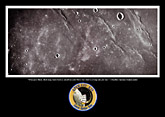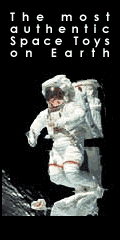 |
|
 |
Reinventing
NASA Is Only Phase One When President George W.
Bush ordered NASA to develop a whole new space exploration
agenda last January, he also directed the leadership of the
space agency to review virtually everything it did.
|
 |
Future
Bright For Baikonur Cosmodrome The oldest manned
spaceport in the world is also still the busiest and, as it
has so often in the past, the Baikonur Cosmodrome is once
again beating the odds. |
 |
|
 |
|
 |
|
 |
Cassini
successfully arrives at Saturn NASA's $3.3 billion
Cassini probe completed a seven-year, 2.2-billion mile voyage
tonight, firing its main engine for a nerve-wracking 96
minutes to successfully brake into orbit around the ringed
planet Saturn. |
 |
|
 |
'Waterfall'
heard on Saturn moon A scientist has worked out
what a "waterfall" might sound like in space, ahead of a Nasa
mission that could find oceans on Saturn's largest moon.
|
 |
'Over
the moon' at Saturn UK scientists involved in the
Cassini space mission were 'over the Moon' after the
spacecraft's 100,000 km per hour white knuckle ride courtesy
of Saturn's gravity which successfully completed the critical
manoeuvre to place Cassini in orbit around the ringed planet.
|
 |
|
 |
Hubble
studies sequences of star formation in neighbouring galaxy
Our neighbourhood galaxy the Large Magellanic
Cloud (LMC) lies in the Constellation of Dorado and is
sprinkled with a number of regions harbouring recent and
ongoing star formation. One of these star-forming regions,
N11B, is shown in this Hubble image. It is a subregion within
a larger area of star formation called N11. N11 is the second
largest star-forming region in LMC. It is only surpassed in
the size and activity by 'the king of stellar nurseries', 30
Doradus, located at the opposite side of LMC. |
 |
Mission
to Saturn Cassini is providing our closest-ever
encounter with Saturn, possibly the most beautiful planet in
the solar system. |
 |
Dark
matter and dark energy may be different aspects of a single
unknown force In the last few decades, scientists
have discovered that there is a lot more to the universe than
meets the eye: the cosmos appears to be filled with not just
one, but two invisible constituents –dark matter and dark
energy ?whose existence has been proposed based solely on
their gravitational effects on ordinary matter and energy.
|
 |
|
 |
Revisiting
the Orion Nebula An international team of
astronomers used the Wide Field Imager installed at the
ESO/MPG 2.2m telescope at La Silla, to obtain very deep images
of Orion Nebula in different wavebands. The new striking
images should help the astronomers to better understand how
the formation of stars depends on the surrounding conditions.
A false-colour very high-resolution composite image of the
Orion Nebula has been created from these images for everybody
to enjoy. |
 |
|
![]()












![]()
![]()
![]()
![]()
![]()

![]()



